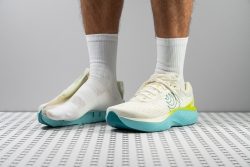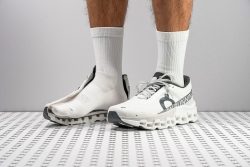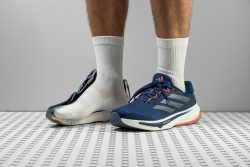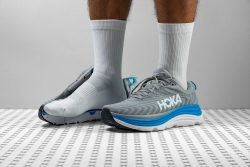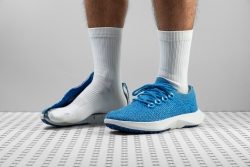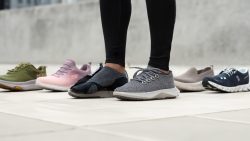6 Best Walking Shoes For Wide Feet in 2025

We buy shoes ourselves. We earn commissions when you buy through us, at no extra cost. Why trust us
We all have different foot shapes and sizes but we all deserve comfortable and well-fitting walking shoes to enjoy ourselves! If you have above-average feet but want to clock up those 8-10K steps without any nagging discomfort or foot pain, this guide is for you.
We have meticulously selected the most accommodating walking shoes that offer more space in their standard medium width than most other shoes. What’s more, we selected them in multiple categories to help you find the best match even faster.
How we test walking shoes for wide feet
In our lab, we have developed a proprietary method for measuring the shoe’s internal space with the help of gel. This liquid substance takes the shape of the shoe's interiors and forms a one-to-one replica for us to measure. That way, only truly wide walking shoes (in regular D width) make it to this selection.
But that’s not nearly all. We put each shoe through the wringer of wear tests and lab tests where we measure and assess every possible parameter related to shock absorption, stability, durability, breathability, and more. Our calipers, durometers, Dremels, shoe stiffness testers, and other machines deliver objective and comparable data, which allows us to write the most comprehensive shoe reviews.
And, of course, we buy all tested shoes with our own money.
Best walking shoes for wide feet overall
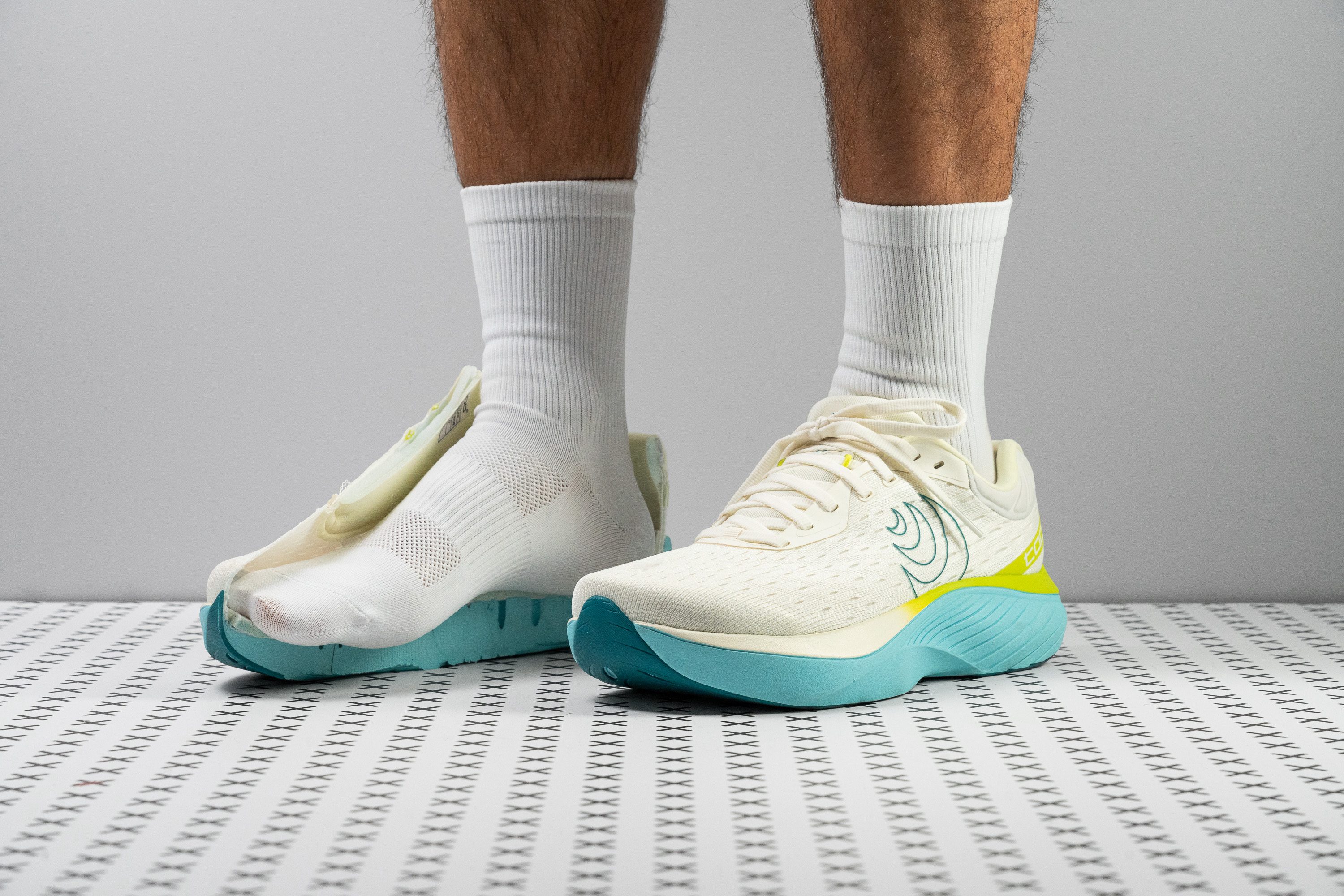















































What makes it the best?
The Topo Atmos offers a well-balanced feeling in our walks with exceptional impact protection and accommodating dimensions, backed up by our lab results. This high-stacked workhorse is surprisingly light for the stability it offers, making it our top wide walking shoe.
We immediately enjoyed the roominess of the shoe during testing. Using our caliper, we found the base to be a wide 119.1/96.8 mm. With much more space than the 114.1/90.6 mm average, we had a confident stance and solid footing with every step. Our gel mold replica also shows that the ball of the foot measures 98.5 mm, 3.1% above average.
Compared to other walking shoes, the Topo Atmos' stack stands tall at 37.8/32.5 mm. Together with its near-average 20.0 HA cushioning, it focuses on dampening impact and providing comfort without compromising support.
Despite its height and width, Atmos only weighs 9.7 oz (275g) and was never a burden even during long hours on foot. However, it’s slightly stiffer than average, which may disappoint those who find comfort in flexible shoes.
Pros
- Max-cushioned comfort
- Ultra-spacious toebox
- Stable ride
- Premium Ortholite footbed
- Midfoot-friendly geometry
- Lightweight for its huge size
- Great for easy long runs
- No heel slippage
Cons
- Lacks energy return
- Not for narrow-footed runners
- Could be a bit more flexible
Best cushioned walking shoes for wide feet
























































What makes it the best?
Among the wide walking shoes we took to the streets, the On Cloudmonster 2 offers the best shock absorption. Lab-testing shows it has a protective stacked midsole and generous real estate for comfort during long hours of wear.
The midsole effectively protected us from impact with its firm cushion that actually feels much softer on foot because of the CloudTec technology. Testing for its shock absorption, it emerged with a high 137 SA rating, proving the cushioned sensation we felt during our strolls.
Using our caliper, we also measured its stack height at a generous 37.9/31.3 mm, keeping a lot of material between our feet and the ground for extra protection.
Those of us with wide feet instantly felt at home in this shoe. We created a gel mold to replicate its in-shoe space, and measured the widest part at 98.5 mm, 3.2% wider than average!
However, don’t expect much in terms of breathability. With a low 2/5 ventilation score in the lab, we can’t recommend this to people who don’t like overheating and dealing with sweaty feet.
Pros
- Premium materials
- Enhanced cushioning from v1
- Roomy toebox
- Works fantastic for midfoot strikers
- Unique ride feel
- Excels in long runs
- Solid stability
Cons
- Breathability needs improvement
- Tongue lacks enough cushion
- Needs to lose a bit of weight
- Not enough energy return
Most comfortable walking shoes for wide feet
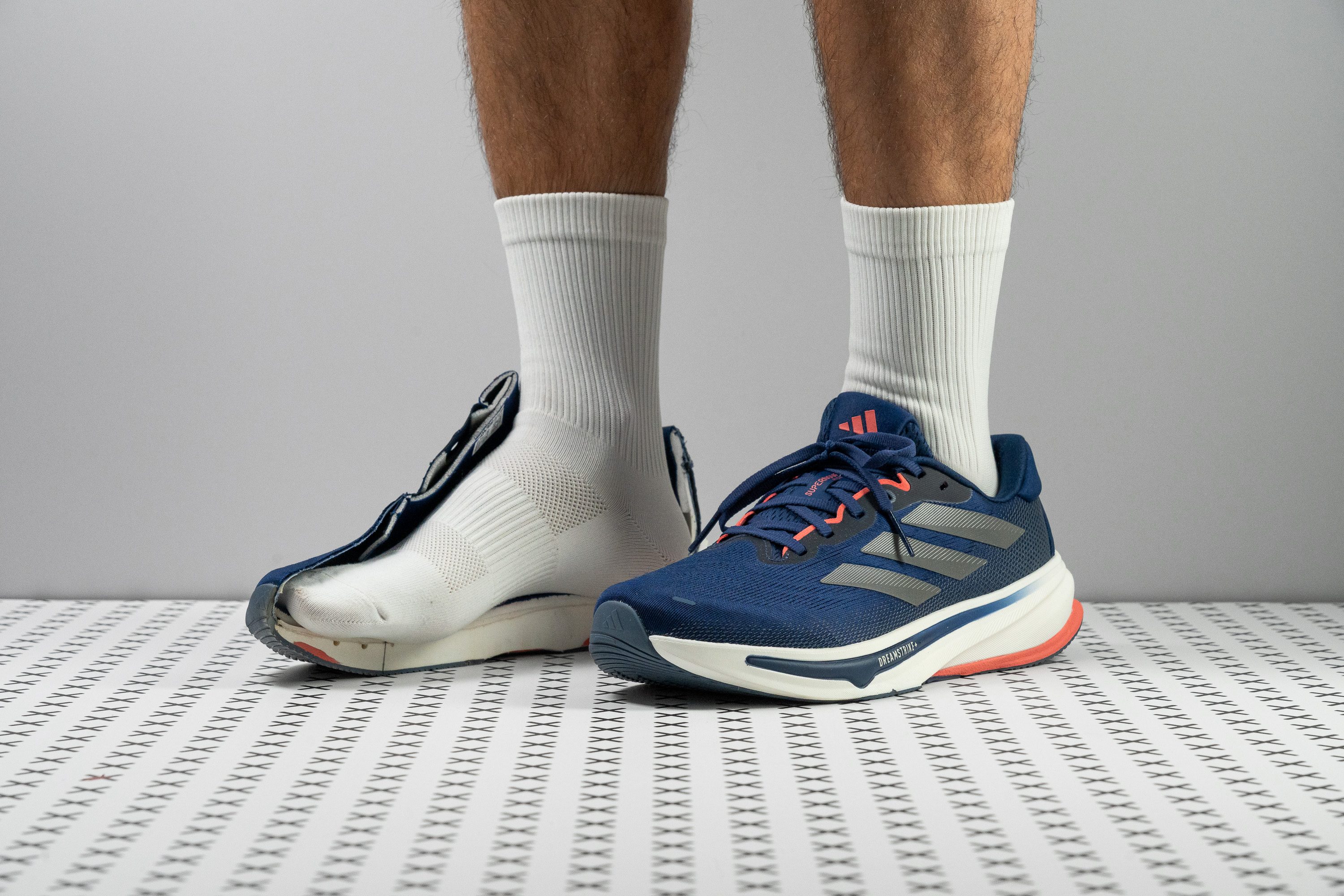















































What makes it the best?
The Adidas Supernova Rise 2 offers an easy ride, through its light and flexible build and its springy midsole. Our feet enjoyed its effortless energy and our lab confirms it boasts the Dreamstrike+ midsole. Together with its generous dimensions in the forefoot, it’s our best comfortable wide walking shoe.
This shoe does not demand attention when on foot. It’s light, as our scales confirmed with a 9.1 oz (257g) figure, and bends easily with our feet. In our lab test, it took 37.6% less force to bend the shoe to a certain angle, proving its light and malleable construction.
Supernova Rise 2 has a relaxed fit, particularly near the ball of the foot. We measured our gel mold in this area, and it measures 98.7 mm, 3.2 mm wider than average. This makes it accommodating for those with wide or swollen feet.
Beneath us lies the responsive Dreamstrike+ midsole, which made the experience all the more effortless. It offers excellent impact protection and keeps us moving forward with its springy sensation. Our durometer confirms the midsole is a well-balanced 21.0 HA.
Unfortunately, it doesn’t feature a gusseted tongue, which may take away the shoe’s fuss-free and comfortable ride. Those who find this a nuisance should try other options.
Pros
- Lighter than version 1
- Comfortable yet breathable upper
- Cold-proof PEBA midsole
- Stable ride with Support Rods
- Reflective accents for night visibility
- Maintains competitive price tag
- Responsive Dreamstrike+ foam
- Flexible, natural running experience
- Great for walking
Cons
- Outsole lacks Continental
- Not cushioned for forefoot strikers
- Still lacks a gusseted tongue
Best stability walking shoes for wide feet
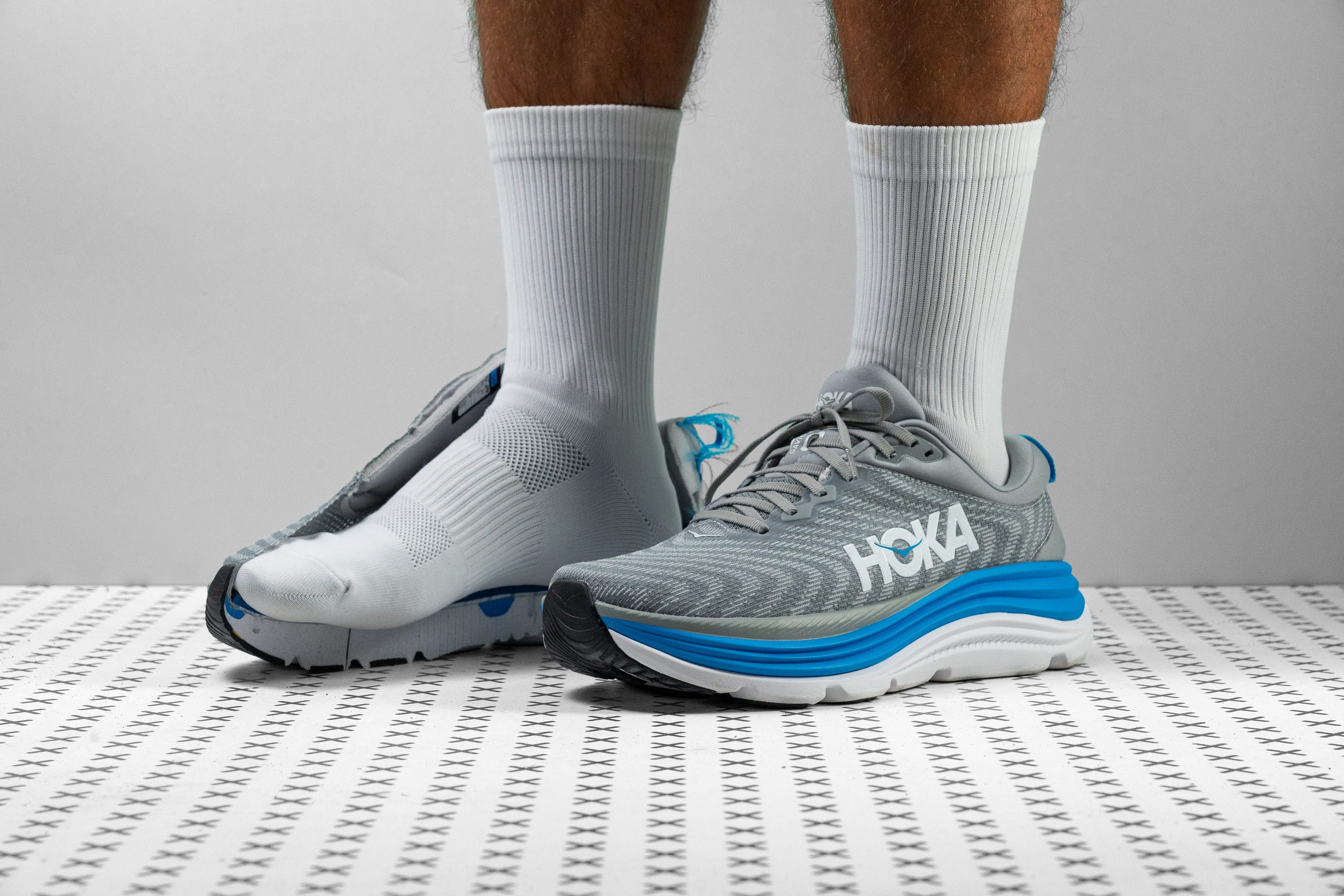
















































What makes it the best?
The Hoka Gaviota 5 is our best stability wide walking shoe because of its reliable support, broad dimensions, and undeniable plush and refreshing comfort in our strolls. Our lab tests show it has several elements that contribute to our surefootedness: its spacious base, H-Frame, and dual-density midsole.
We measured the midsole to be 125.1/106.6 mm, which is way above the 114.1/90.6 mm average. This extra room allows us to find our footing securely, while the stiff H-Frame adds resistance so that we remain centered and aligned.
The midsole was a pleasure to be in! It has a plush sensation but doesn’t collapse unevenly. Our durometer shows a dual-density setup: a soft 12.9 HA main cushion for comfort and a firmer 22.0 HA layer in strategic areas for support and durability.
We’re also welcomed with a refreshing upper with a forgiving fit. Measuring our gel mold, the widest part of the toebox measures 99.7 mm, 4.4% above average, making it suitable for wide or swollen feet. We never felt like overheating thanks to the breathable upper that aced our smoke test with a 5/5 score.
Unfortunately, Gaviota 5 is 36.5% stiffer than average, which takes away the light and natural feel some people prefer.
Pros
- Remarkably stable
- Breathable and comfortable upper
- Lightweight for its size
- Good stability option for forefoot strikers
- Ideal for wide feet
- Excellent for long runs
Cons
- Low drop might pose issues for heel strikers
- Performs poorly in colder conditions
- Not for narrow feet
- Midsole feels flat
Best rockered walking shoes for wide feet
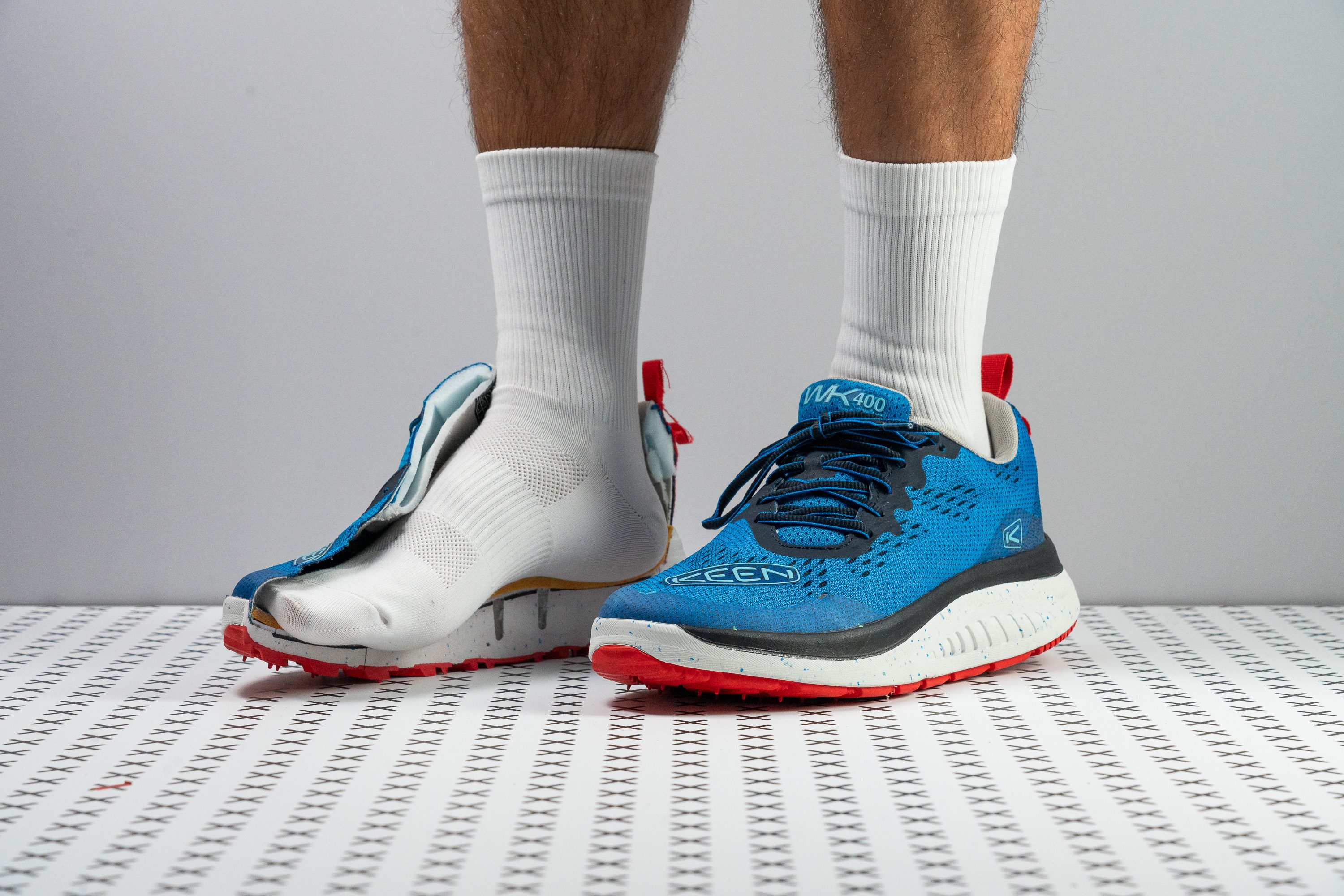


















































What makes it the best?
Our strolls felt silky smooth with the KEEN WK400 offering the most top-tier rocker experience among wide-walking shoes. Equipped with KEEN.CURVE technology and ultra-thick, pillowy cushioning—backed by our lab tests—the ride feels exceptionally comfortable and spacious, with extra room in all areas.
The KEEN.CURVE refers to the rockered bottom, which leads us to move forward every time we land on our heels. It works like a rocking chair and can maintain this motion through its stiff full-length nylon plate.
WK400 offers boundless comfort through its deep and plush cushioning, with a stack height reaching a sky-high 45.7 mm in the heel. Our durometer also shows the foam is 16.7% softer than average, keeping our feet happy and pain-free.
This shoe is massive on all fronts! Our caliper confirms an above-average midsole width of 115.5/97.0 mm in the forefoot and heel. Even those with broad or swollen feet will feel at home in the widest part of the toebox. It measures 98.7 mm, 4.4 mm wider than average.
Unfortunately, it’s hard to stand still in this shoe and only feels natural when moving forward. Those who need a more stable shoe for standing should try other pairs.
Pros
- Rocker sole propels you forward
- Copious amount of cushioning
- Amazingly comfortable step-in feel
- Highly durable and abrasion-resistant
- More stable than it seems!
- Can go from road to trail
- Accommodating toebox
Cons
- Needs some getting used to
- Heavier than average
- Slippery when wet
Best versatile walking shoes for wide feet














































What makes it the best?
From our daily commutes to our gym sessions, the Allbirds Tree Dasher 2 kept up. Our lab results show its exceptional flexibility, allowing it to move seamlessly with our feet. It has a broad and firm base that stabilizes our steps and a breathable knit upper to boast, making it our most versatile wide walking shoe.
Cementing its status as an all-purpose shoe, the Tree Dasher 2 emerged 30.6% more bendable than average. This level of flexibility makes it suitable for other activities as well. Even torsionally, we could twist it with ease, so we rated it a low 2/5 rigidity score.
The base made us feel well-planted to the ground with its firm sensation. Our durometer confirms this with a high 27.0 HA reading. Plus, it offers generous space that enhances our control. We measured our gel mold at the widest part, and it measured 99.7 mm, 4.4% wider than average.
The plush and breezy knit upper enhances comfort for prolonged wear. In our smoke test, we couldn’t help but give it the highest 5/5 breathability rating. Surprisingly, it’s impressively durable too, with its 5/5 toebox durability score. The upper receiving two perfect scores happens once in a blue moon in our lab!
Unfortunately, its resistance to wear doesn’t apply to the outsole. Those looking for long-lasting shoes should find a pair with a more robust outsole.
Pros
- Comfortable and breathable upper
- Constructed with sustainable materials
- Carbon neutral
- Significant enhancements over v1
- Provides a stable ride
- Suitable for walking and gym training
- Excellent lockdown
- Spacious enough for really wide feet
Cons
- Might be excessively firm
- Overly spacious for those with narrow feet
- Pricey considering its performance
Walking shoes for wide feet: when to consider
Wearing an ill-fitting shoe is more common than you think! In one study, 60-70% of participants were wearing shoes that didn’t accommodate either their foot length or foot width! This, in turn, was associated with foot pain and disorders like toe deformity, corns, and calluses.
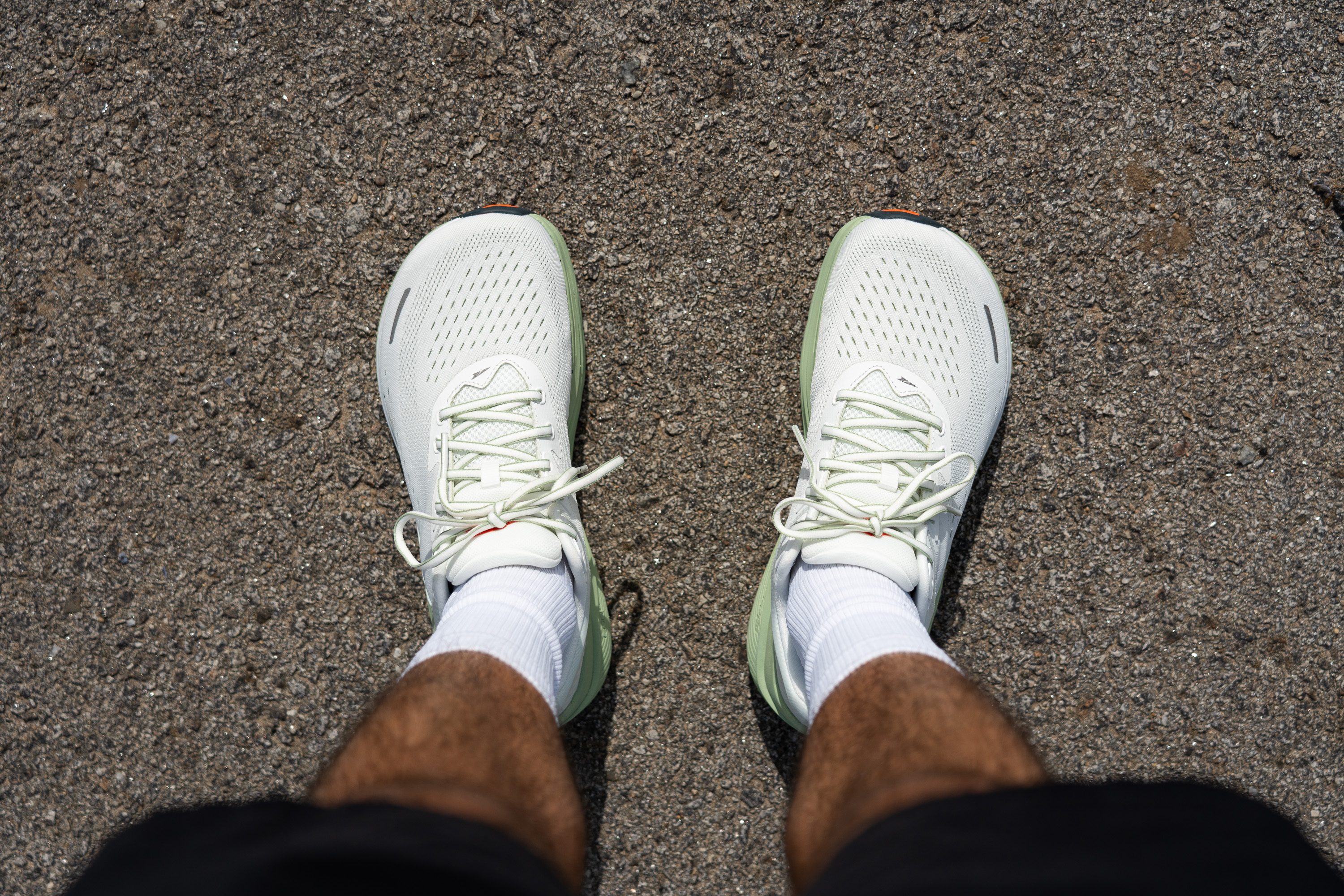
That’s why it could be very beneficial to have your foot measured with a special Brannock device in a nearby shoe store. You might be surprised to find that you’ve been getting the wrong shoe size and width all along!
But if this option is not available to you, there are other indirect signs that you may need a wider walking shoe. Do you experience any of the following discomforts?
- shoe tightness that causes burning sensations, hot spots, or blisters
- pressure on top of the foot even when laces aren’t cinched tight
- alternative lacing techniques don’t help to ease up the tightness
- getting a size larger only makes the shoe longer but the fit is still tight
- your toes are cramped, your pinkie toe goes numb, and the big toe is pushed to the middle*
*in this case, you might as well need a shoe with a wide toebox; see our guide on the best walking shoes with a wide toebox to learn more.
If any or all of the above applies to you, you do need a wide walking shoe. This could either be a medium-width shoe with a roomier fit or an alternative wide or extra-wide width.
Measuring shoe width in the lab
In our RunRepeat lab, we measure the internal width of all shoes in a standard D medium width and a men’s US size 9. This allows us to check how much wider (or narrower) a given shoe is compared to the industry average.
We fill each shoe with liquid gel and keep it in the fridge until the substance solidifies (2 hours) and takes the shape of the shoe. We then use a digital caliper to measure the dimensions of this one-to-one replica in several areas:
- the widest part of the shoe
- toebox width (at the big toe)
- height of the toebox (vertical space at the big toe)
|
We approve walking shoes for wide feet based on their shoe width in the widest part. |
Having measured hundreds of shoe molds, we found that the difference between the narrowest and the widest walking shoe is as large as 10 mm! The range goes from about 90 mm to 100 mm and above!
In the photo below, we put together the narrowest and the widest walking shoes in our lab so far.
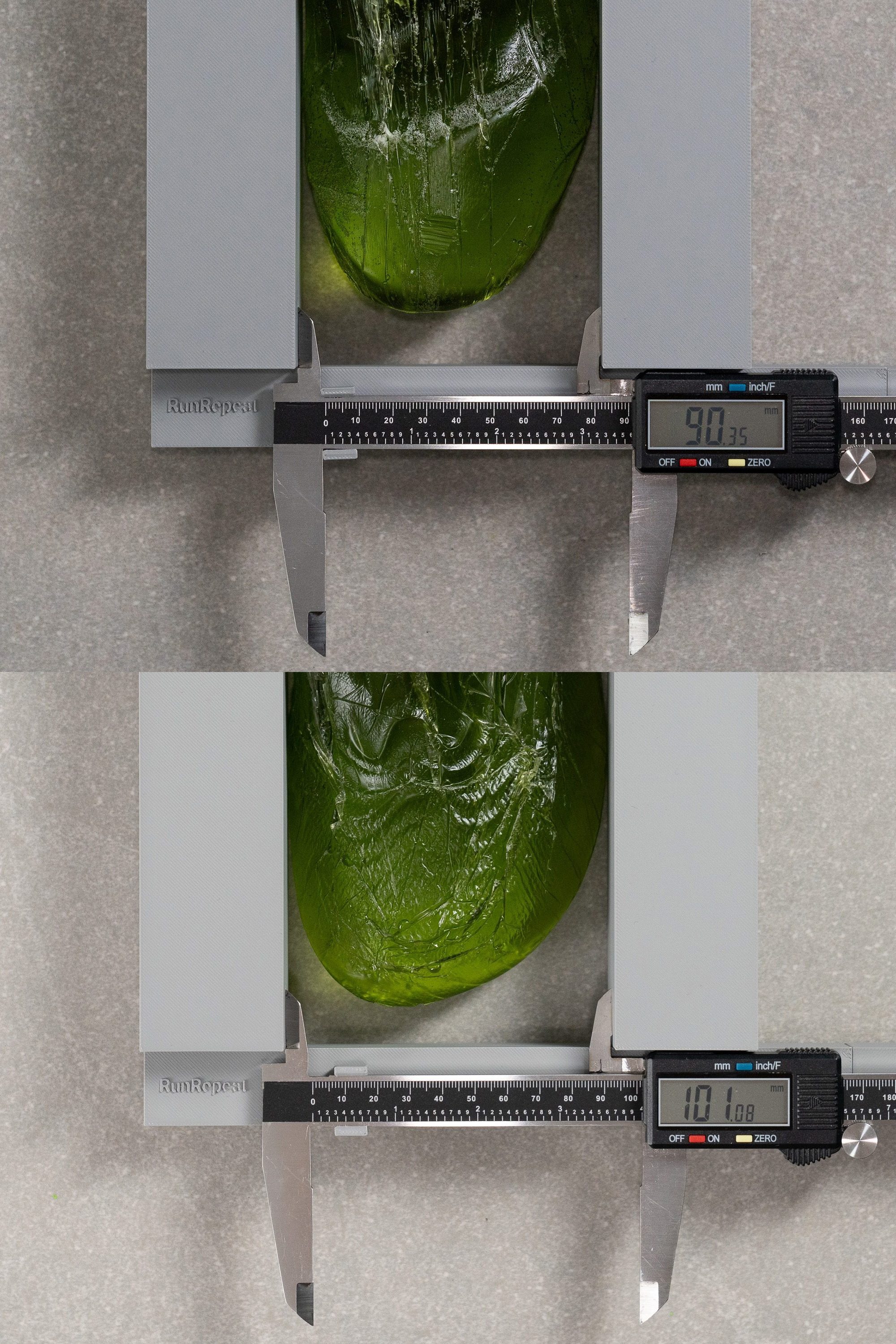
Wide shoe vs. wide toebox: what’s the difference?
As our extensive database shows, not all shoes that are wide in the metatarsal area will be equally wide in the toe area. Let’s compare two shoes in the photos below:
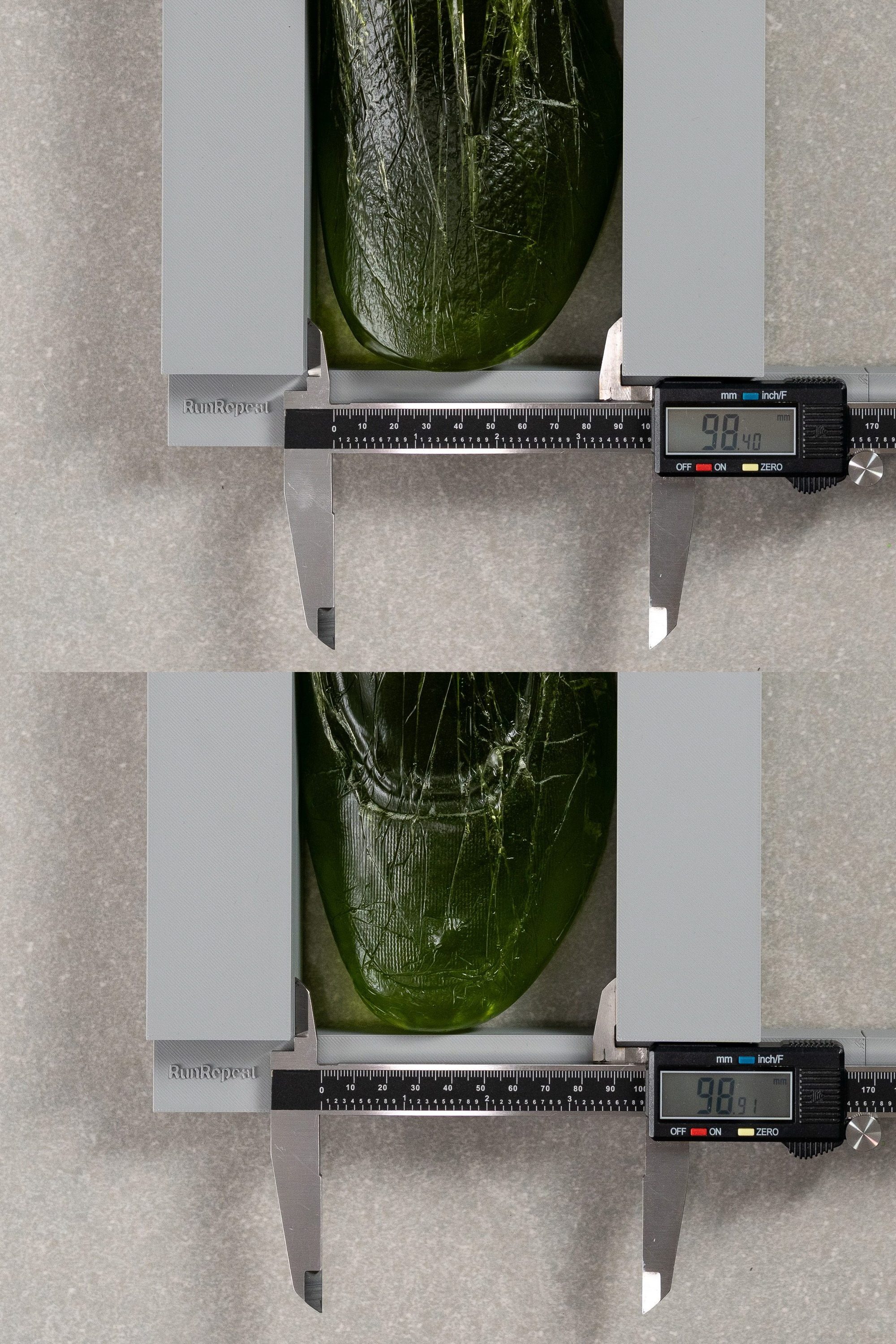
Both molds returned nearly identical measurements in the widest part of the shoe, but they clearly have different toebox shapes, which is reflected in our second measurement.

Just as we anticipated, the difference in the big toe width of the two shoes turned out to be as much as 8.4 mm! The more tapered (pointy) shoe returned a narrower reading, whereas the more rounded (foot-shaped) one showed a wider reading.
If you want to make sure that your future pair of walking shoes fits wide all along the foot, check that both of these measurements are wide:
Wide and extra wide widths in walking shoes (2E/4E)
To expand your options, you might as well consider getting wide or extra-wide variants of walking shoes. Brands like New Balance, Brooks, ASICS, HOKA, and Saucony are the most generous in this regard.
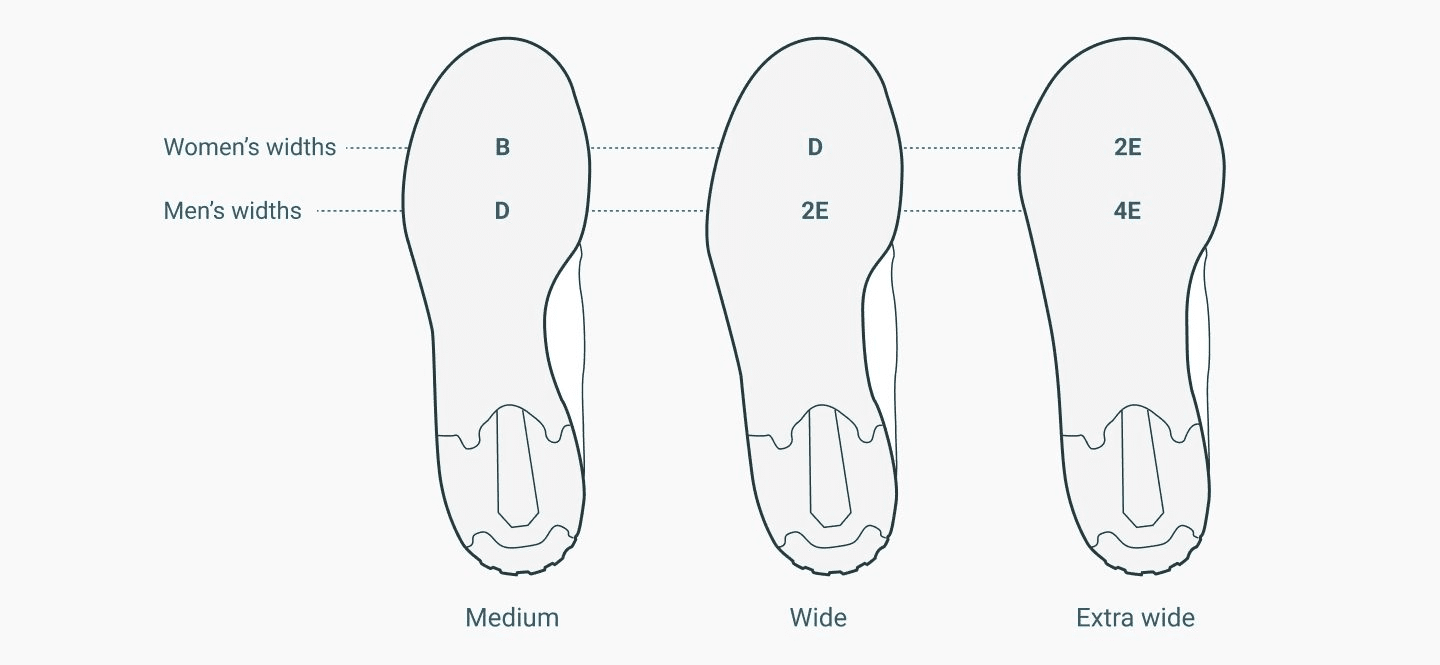
But how much more space do you get in a wider version of the shoe? This varies a lot depending on the brand and the specific shoe design. We can only get a general idea from the detailed width charts of brands like New Balance and HOKA:
- In New Balance shoes, you get 3-4 mm more in the 2E width and 6-7 mm more in the 4E width (compared to the D medium width).
- In HOKA shoes, men get 8 mm more in the 2E width and 12 mm more in the 4E width. Meanwhile, ladies get 6 mm more in the D wide width (all compared to the standard width).

